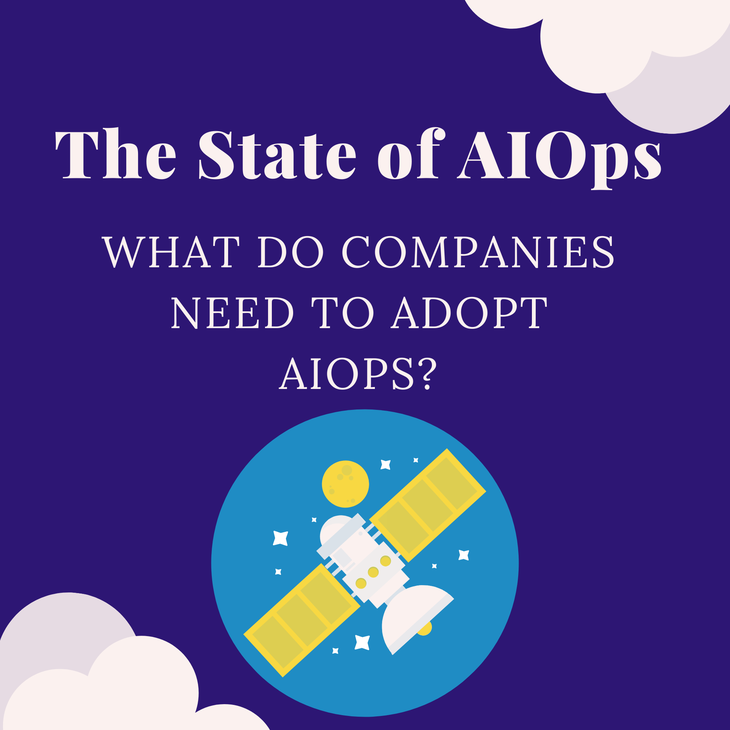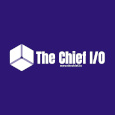The State of AIOps: What do Companies Need to Adopt AIOps?
in AIOps

In 2018, two of the largest supermarket chains in Australia were hit by technical problems across the country and were forced to suspend business until the issues were resolved. As a result, both companies lost their sales, and the customers were frustrated.
Today, IT teams use a variety of tools to deal with growing data volumes and to monitor data. This can lead to significant delays in finding and solving problems.
IT operations are facing the problem of rapid growth in the amount of data generated by IT infrastructure and applications that need to be collected, analyzed, and acted. Besides, IT operations teams often operate in a silo-type system that is not mutually linked. This also makes it difficult for the team to respond to the most urgent incidents as needed.
Businesses are turning to AIOps to quickly prevent, discover, and resolve IT operations issues such as severe service outages.
What does “AIOps” mean?
According to Gartner, AIOps is an application of data science and machine learning (ML) to IT operations problems. The AIOps platform improves and partially replaces all the main functions of IT operations by combining big data and ML functions. These features include availability and performance monitoring, event correlation and analysis, and IT service management and automation.
Data generated by IT continues to increase in volume, type, and generation speed. The AIOps platform captures and analyzes these data and provides the results in a useful way.
Adoption of AIOps
Gartner expects the proportion of large companies that use AIOps and digital experience monitoring tools to monitor apps and infrastructure will increase from 5% in 2018 to 30% in 2023. Another study conducted by Research and Markets found that AIOps is witnessing an impressive growth worldwide, and the market would reach $9.907 billion by 2023.
According to OpsRamp, a primary service-centric AIOps platform provider revealed that AIOps tools generate value for 87% of organizations. With the rapid growth of technology, the information technology sector is ready for the future deployment of AIOps. The AIOps market is projected to register an upward trend at a CAGR of 27% during the forecast period (2019-2024).
According to MarketsandMarkets, the global market for AIOps platforms will grow from $2.55 billion in 2018 to $11.02 billion by 2023 (average annual growth of 34%). Both industry giants and niche specialized companies compete on it - so far, everyone has enough space. However, the mergers and acquisitions have already begun, and not all will survive until 2023 - at least as independent companies.
Some of the leading players are entering into strategic partnerships to develop the technology, which would not only strengthen the company’s efforts to provide better customer experience but would also help them gain more weight. This, in turn, would fuel demand for AIOps in the market over the forecast period.
AIOps will have a long-term impact on IT operations. IT leaders have high expectations for the potential of using AI for IT operations. But just like moving large objects, they need to overcome inertia and increase speed.
Gartner Market Guide - AIOps will become the primary tool for operation and maintenance
In a report on the AIOps market analysis, Gartner expects that AIOps will become an essential tool for operation and maintenance. So far, few vendors can provide a fully integrated AIOps platform, but most can provide a large number of AIOps functions, and a subset of them is integrated.
Gartner expects that AIOps would play a significant role in data extraction and processing of historical data and data analysis, including software management and application of log data, network data, indicators, and document data extraction, indexing, and persistent storage management.
As the market develops, Gartner finds that the capabilities of AIOps are also continuously expanding. Gartner anticipates that “over the next five years, wide-scope domain-agnostic AIOps platforms and narrow-scope domain-centric AIOps tools such as ITIM, APM, or ITSM suites will become the two paths for delivering AIOps functionality.”
What do companies need to adopt AIOps?
Great customer experience has long been a requirement for business differentiation. Many new services have been developed and released and have spread widely throughout society. This has forced all companies to become “software companies” regardless of their industry. What is important is that what is sought is not value that can be generated by human power alone but a new value that can only be realized using the power of technology.
People’s lives have changed dramatically, including how to buy things and how to make payments, and it has become more and more realistic every year to point out that several years ago. Under these circumstances, IT service has become almost synonymous with “business development,” and the positioning of IT in companies has changed significantly.
Now that the ability to plan for experience value and speed in response to changing needs has become a differentiating factor. The key to winning is how to shorten the lead time to provide “experience value” with the Agile/DevOps approach.
In particular, service development is synonymous with business development. Themes such as how to increase developer productivity and how to eliminate human error are emphasized. It is not only about "build and test" automation but also deployment. Infrastructure operations, such as automation, has been adopted mainly by various companies.
Moreover, infrastructure is becoming increasingly complex. It is not uncommon for multiple infrastructures to become silos within a single company and managed by different tools and processes. Even if automation is incorporated into the process from development to provisioning, the subsequent operations are still subject to manual labor, and the limits to guaranteeing the “quality” that is currently required are approaching its limits.
Under all these circumstances, AIOps is attracting attention. A concept proposed by Gartner in 2016, combining big data and machine learning to enhance and automate critical functions of IT operations, such as ‘availability and performance monitoring,’ ‘IT services,’ ‘management and automation,’ and ‘event correlation and analysis.’
More specifically, a large amount of log data and monitoring data generated from an IT infrastructure composed of multi-vendor products, including OSS (open-source software), is collected in real-time. By analyzing multiple alerts in association with each other, it is possible to detect a failure sign, identify the root cause of the problem, and automatically respond (if known).
To accelerate service delivery, increase IT efficiency, and deliver superior user experience, companies can start using AIOps, which uses advanced algorithms and techniques of artificial intelligence used for the analysis of extensive data from various IT and management tools.
The era of intelligent data management
As we enter in 2020, we are living in an era that is timely. Hybrid multilayer technology creates incredibly complex and rapidly scalable IT environments. The teams are challenged to “make everything work,” and to bring strategic value to the company by allowing it to adapt to changing customer expectations and new competitors quickly.
Companies must modernize the infrastructure and protect it from almost continuous disruption. And they must take into account an increasing number of stakeholders, not only the managers of their company but also third parties such as regulators. The pressure only increases.
Given these stakeholders and these often-divergent priorities, it is evident that a new approach is necessary to allow teams to genuinely see, understand, and act with a minimum of friction on the entire infrastructure. Automation is the solution, but the stakes are high. Can we trust a machine to understand and protect the infrastructure that, in a world undergoing a digital transformation, supports almost all functions of the business?
Many companies and suppliers have made considerable strides in automating computer analysis, but this remains a gradual development, always requiring human intervention. However, in the era of hybrid multilayer systems, in which data and applications are dispersed far beyond the walls of a single data center, it is no longer possible for users to intelligently monitor and manage environments computing at the scale and speed required.
AIOps enters the scene. AIOps provides a resolution of typical operational problems, such as emerging security and governance risks, unexpected errors, reduced system performance, etc. Automation is already underway in IT environments. With AIOps, automation becomes truly intelligent. It is not merely an algorithm acting on predefined rules to extract reports based on models that a human operator has yet to analyze and apply.
The advent of AIOps and intelligent data management is not an incremental development, but a real transformation for IT. This means significant savings, productivity gains, and a substantial reduction in downtime, which has a significant impact on a company’s results. No wonder Gartner predicts that, by 2023, 30% of large businesses will exclusively use AIOps and digital experience tracking tools.
Conclusion
With the right AIOps platform, IT teams can start leveraging advanced features in areas such as automation, cost optimization, and security. With the right solution, it is possible to achieve the most critical objectives.
When a company embarks on the evaluation of AIOps solutions, it is essential to remember these fundamental prerequisites to establish a reliable AIOps platform and strategy. Companies must first prioritize and invest resources in an AIOps strategy to build a stronger link between IT teams and the business at large.
Get similar stories in your inbox weekly, for free
Share this story:

The Chief I/O
The team behind this website. We help IT leaders, decision-makers and IT professionals understand topics like Distributed Computing, AIOps & Cloud Native
Latest stories
How ManageEngine Applications Manager Can Help Overcome Challenges In Kubernetes Monitoring
We tested ManageEngine Applications Manager to monitor different Kubernetes clusters. This post shares our review …
AIOps with Site24x7: Maximizing Efficiency at an Affordable Cost
In this post we'll dive deep into integrating AIOps in your business suing Site24x7 to …
A Review of Zoho ManageEngine
Zoho Corp., formerly known as AdventNet Inc., has established itself as a major player in …
Should I learn Java in 2023? A Practical Guide
Java is one of the most widely used programming languages in the world. It has …
The fastest way to ramp up on DevOps
You probably have been thinking of moving to DevOps or learning DevOps as a beginner. …
Why You Need a Blockchain Node Provider
In this article, we briefly cover the concept of blockchain nodes provider and explain why …
Top 5 Virtual desktop Provides in 2022
Here are the top 5 virtual desktop providers who offer a range of benefits such …
Why Your Business Should Connect Directly To Your Cloud
Today, companies make the most use of cloud technology regardless of their size and sector. …
7 Must-Watch DevSecOps Videos
Security is a crucial part of application development and DevSecOps makes it easy and continuous.The …








